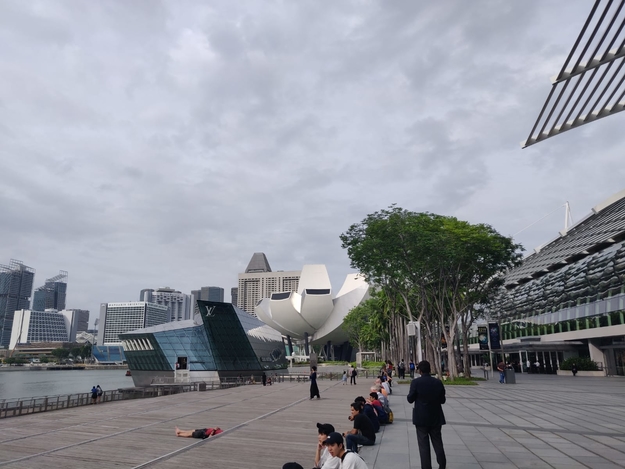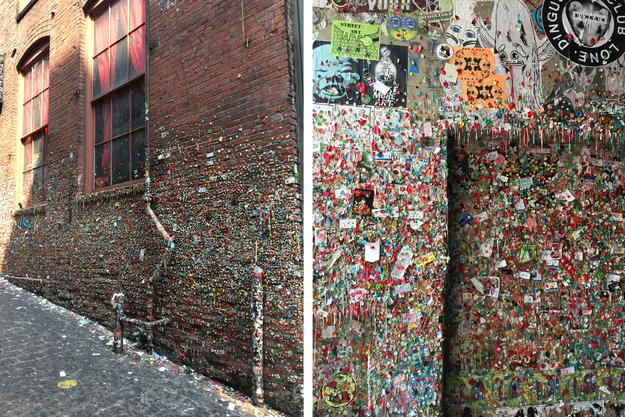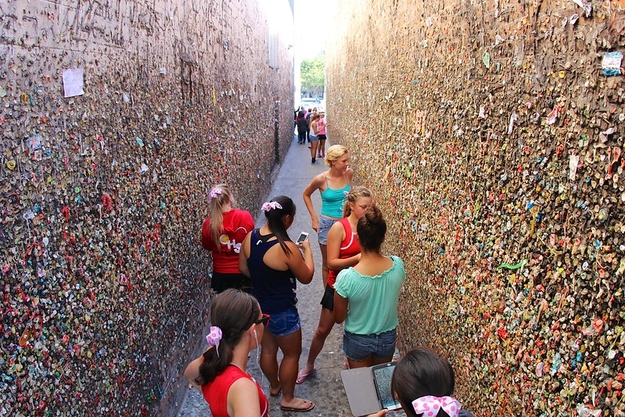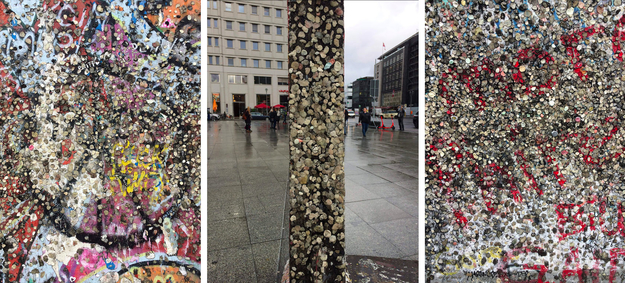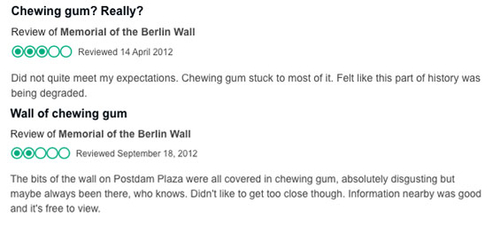Singapore probably has the world’s most notorious legislation concerning gum. In the country, no gum can be sold (other than in prescription situations for therapeutic, dental or nicotine replacement applications) and being caught spitting gum out on the street will result in a minimum fine of $1000. Such strict laws, seen no where else on the planet, come from how as the country quickly gained economic prosperity, so did rise the number of cases of gum-vandalism. Singaporian youth would tack gum onto buttons on public housing elevators and expensive public transit systems, hindering the vision of a highly-functional, highly disciplined city-country. The first prime minister of Singapore, Lee Kuan Yew, came to see gum as disgusting and “anti-utopian”, completely non-conducive to the ideal state he wished to build and establish.
Just about as far from this mentality towards gum as you can get can be found in two locations in the United States: Bubblegum Alley in San Luis Obispo, California, and to an even more epic scale at the Gum Wall in Seattle, Washington. Bubblegum Alley stands as two adjacent walls, 4.5 metres tall and over 20 meters long; and the Gum Wall spans several streets and winding alleys in the heart of Seattle’s tourist area near Pike Place. Both have become major landmarks in the cities and visitors and locals come to stick their gum on these walls. Maybe they will use several pieces to express themselves in word or a shape - just because they can in these spaces where they are free to do so.
This obviously stands in sharp contrast to the attitude towards gum in Singapore. In the United States, a country known for touting freedom and liberty as their national identity, you can do what you want and affix your gum to the wall because you are free to do so. In Singapore, the contribution to the utopian vision is in the lack of full-freedoms - restriction for the greater good.
Being restricted in this way would not be coherent with the United States’ vision of a freedom-rich utopia, no matter the cost to the public good. And quite a cost there is. The sugar from the gum along the Gum Wall erodes the bricks it is adhered to, and also attracts pests and rats to the area, costing thousands of dollars to clear up. Though perhaps this cost is worth it for the city when taking into consideration the tourists the site attracts.
These are not the only examples of where gum being stuck to public spaces and property has become symbolic to a nation’s identity in terms of freedom. After a great deal of build up, on November 9th 1989 a crescendo was reached and became known as the night that the Berlin Wall came down and citizens seized their freedom. Over the next days, months and years, bits and pieces of the barrier that separated the depraved East and the prosperous West were chipped away and town down. Today, only a very small percentage of the wall still stands, and no insignificant portion of it is covered in bits of chewing gum, particularly around Potsdamer Platz. While some tourists find this dissatisfying (see the below TripAdvisor reviews), the city’s cultural affairs officer seems to care less: “After all, the wall is not the Mona Lisa '' Klemke said in 2011. The remnants of the Berlin Wall represent a country liberated, and people from near and far are free to place their gum on this relic of an authoritarian society.
